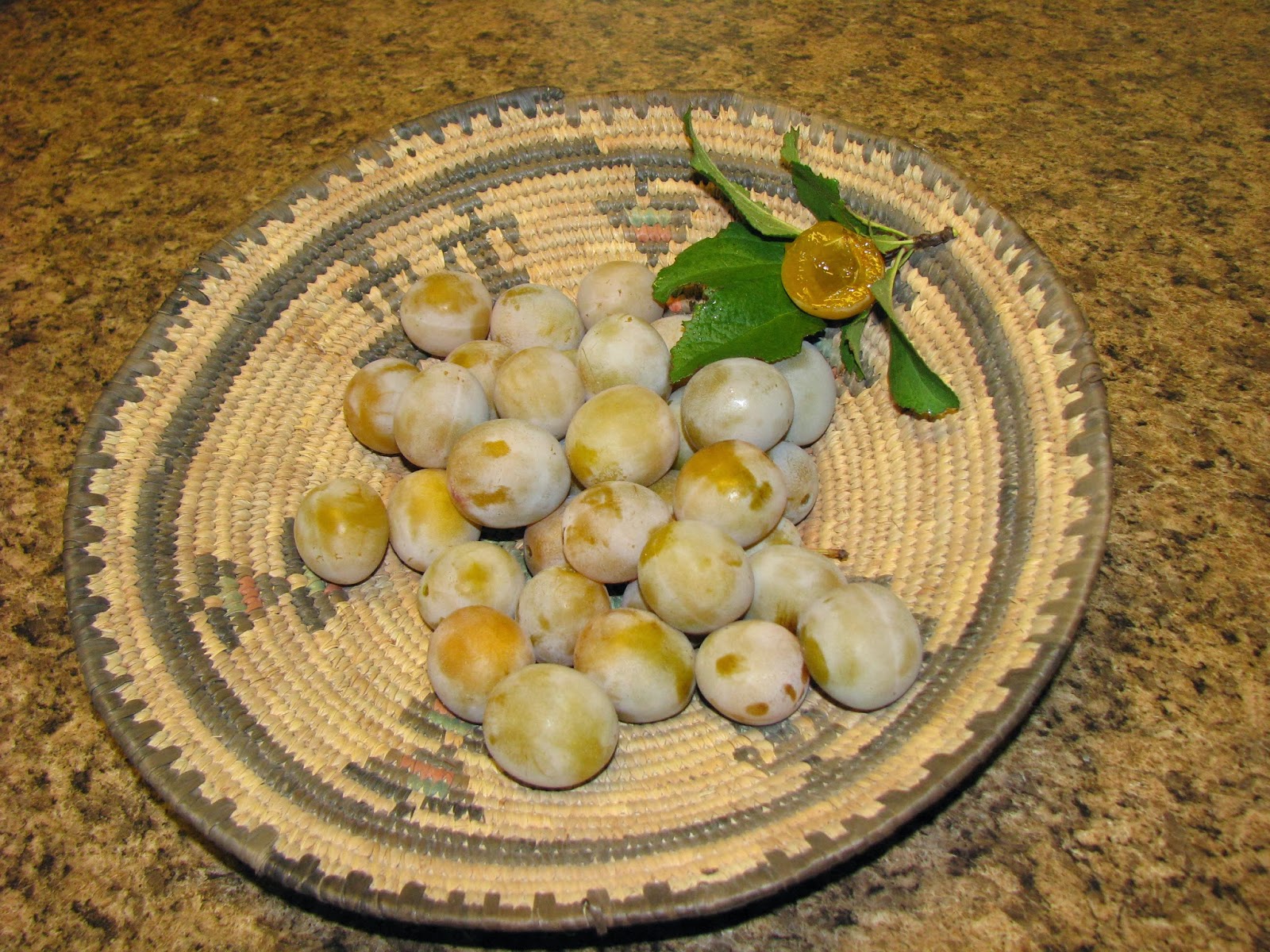If you are interested in planting the Potawatomi as a heritage plum, here is where the trail gets difficult to follow.
The American plum is also known as:
- Pottawattami plum
- Wild plum
- Yellow plum
- Red plum
- River plum
- Goose plum
- Hog plum
- Ciruela
 |
| Potawatomi Fruit Courtesy of Capitol Reef National Park |
This is the plum I remember from childhood in Central Utah. The short, shrub like thickets planted along the irrigation ditches have mostly disappeared as new housing and development fill up the land. Broken fragments of the plum stands remain and are becoming a rarity. Full grown trees are gnarled and generally don't reach more than seven feet tall.
The "Capitol Reef National Park,
List of Fruit and Nut Varieties Including Heirlooms," identifies the Potawatami as Prunus munsoniana. Notice the short stems and white dots on the skin of the fruit.
While researching, I have found many native Utahns refer to any wild plum as Potawatomi. For example, there is a tall spreading tree plum, with yellow cherry size fruit, that some call a Potawatomi along the lower Provo River trail in Provo, just west of Geneva Road. Once plentiful when the river ran higher and trees could grow unimpeded, there are now only about a dozen. The trees start easily from seed but have limited opportunity due to competing species and pavement.
Other Utahns I have spoken with tend to call the various light to dark purple shrub and hedge tree plums Potawatami. Many of these plums can be seen growing along railroad lines.
Naturalized Yellow Cherry Plum on Provo River
October 2013
Another local plum called a Potawatomi is found growning in my local Utah neighborhood. This plum is unique in that it is one of the last to ripen in September and early October. The seeds to this plum are not round, they are a longer oval shape with deep grooves.
Local Yellow Egg or Pershore Plum
October, 2013
To plant the Potawatomi from seed, start with cold stratified seeds from fully mature fruit, or plant the seeds in a garden trench in late fall. Although the Potawatomi is naturally a small shrub or small tree, they don't do well in shade and will not thrive as an understory planting.
The trees could be planted along roads in run off areas, around ponds, along a driveway edge to catch runoff, or in any area where they will get sufficient water. The trees make an excellent wildlife forage barrier or hedgerow between fields and gardens. The white blooms beginning in March attract pollinators; the fruit ripens in late summer.
Today many energy or food bars use plum puree or plum powder as a main ingredient along with dates. I haven't ever seen the plums identified by what kind of plums however, so buyer beware, you have no idea what type of plums are used or where they are grown. Plums are a very inexpensive source of nutrients and natural sugars.
Traditional uses for plums are jams, jellies, chutneys, and sorbets. The plums can also be dried and have the best, sweetest and unique flavor when fully ripe.
If you have a Potawatomi plum story and/or seeds and photos please share your comments.
Today many energy or food bars use plum puree or plum powder as a main ingredient along with dates. I haven't ever seen the plums identified by what kind of plums however, so buyer beware, you have no idea what type of plums are used or where they are grown. Plums are a very inexpensive source of nutrients and natural sugars.
Traditional uses for plums are jams, jellies, chutneys, and sorbets. The plums can also be dried and have the best, sweetest and unique flavor when fully ripe.
If you have a Potawatomi plum story and/or seeds and photos please share your comments.
Source credits:
Renewing America's Food Traditions: Saving and Savoring the Continent's Most Endangered Foods Edited by Gary Paul Nabhan
www.fs.fed.us/global/iitf/pdf/shrubs/Prunus%20americana.pdf
Renewing America's Food Traditions: Saving and Savoring the Continent's Most Endangered Foods Edited by Gary Paul Nabhan
www.fs.fed.us/global/iitf/pdf/shrubs/Prunus%20americana.pdf

